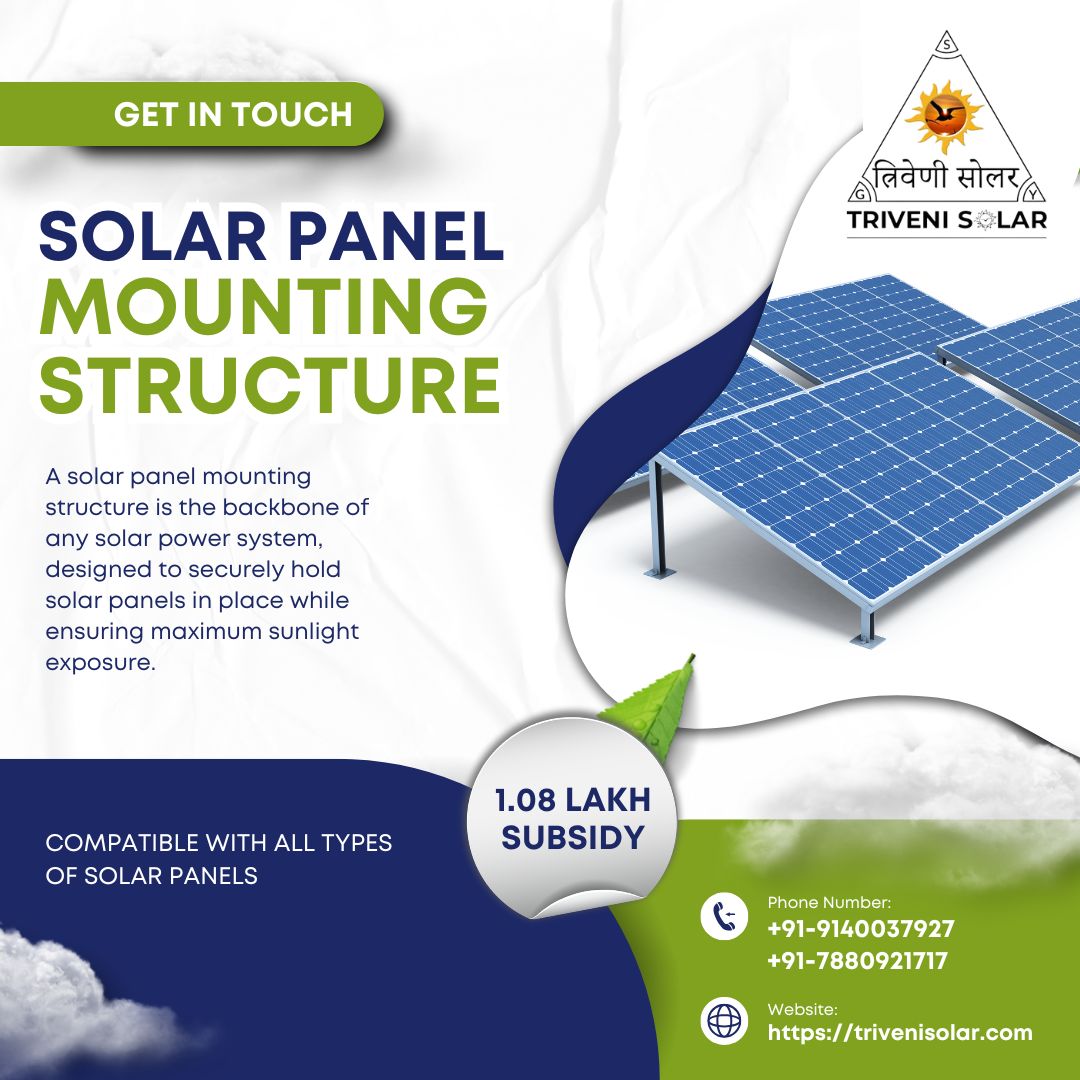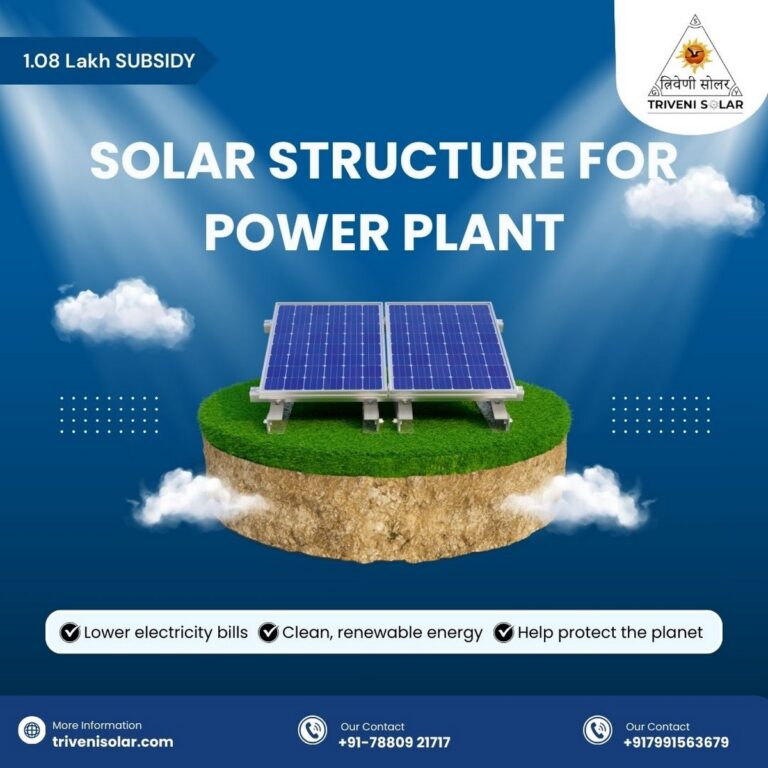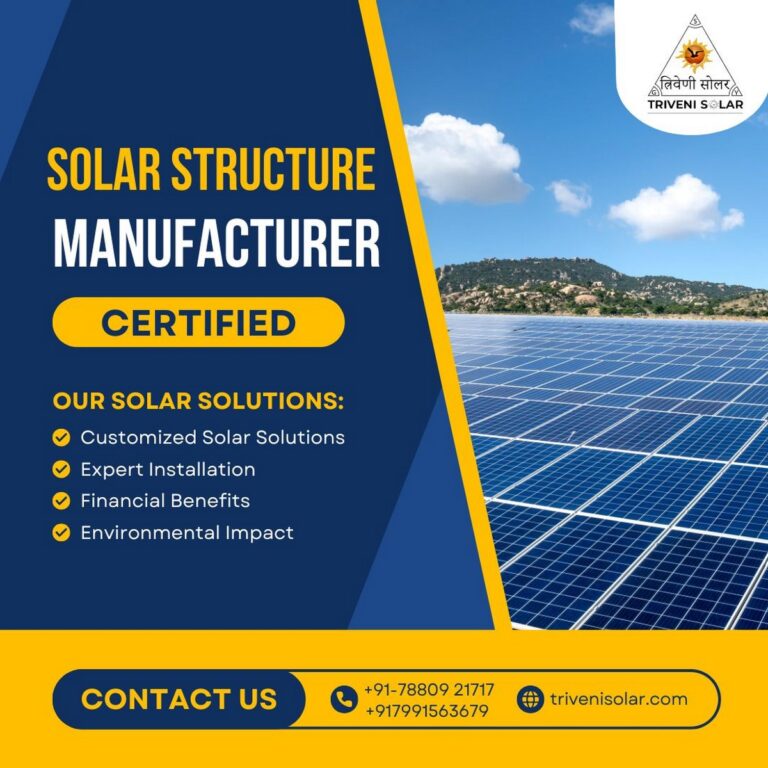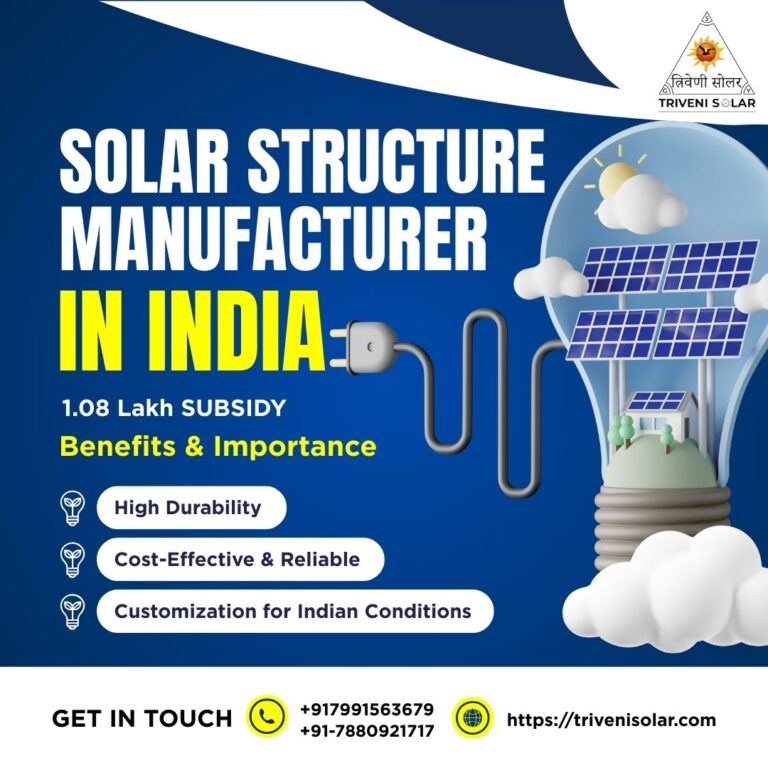A solar panel mounting structure is the framework that holds solar panels securely on rooftops or ground installations. The right choice depends on location, load capacity, and budget. In India, durable, corrosion-resistant structures are vital for long life and storm protection.
📑 Remarkable Truth About Solar Panel Mounting Structure: What You Actually Need to Know
When most people think about solar, they focus on the panels themselves. But without the right solar panel mounting structure, even the best solar panels cannot deliver reliable performance. This structure isn’t just a frame—it’s the foundation that ensures durability, safety, and long-term efficiency.
In the Indian context, where monsoons, high winds, and dust storms are common, the quality of your mounting system is just as important as the panels. Let’s break down everything you need to know.
Understanding solar panel mounting structure
A solar panel mounting structure (also called a solar racking system) is the supportive framework that holds photovoltaic (PV) modules in place. It ensures the panels stay at the correct angle, withstand weather forces, and operate efficiently for decades.
Main Components
- Roof Attachments/Footings: Secure the system to concrete or metal surfaces.
- Rails: Horizontal beams that panels rest upon.
- Clamps: Fasten modules to rails (mid clamps, end clamps).
- Flashings & Bolts: Prevent leakage and ensure strength.
- Tracking Systems (optional): Adjust orientation for maximum sunlight.
Types of solar panel mounting structure
Different projects require different mounting approaches. Below are the most common types used in India and worldwide.
Rooftop Mounting
Ideal for residential and commercial buildings. Rooftop structures can be flush mount (parallel to the roof) or tilt mount (angled for better efficiency).
Ground-Mounted
Installed directly on open land. Best for large solar farms or homes with ample yard space. Easy to clean and maintain.
Floating Solar Mounts
Panels mounted on water bodies. Growing popular in India, where land is scarce.
Pole-Mounted
Individual panels mounted on single or multiple poles. Useful in farms and rural applications.
Carport & Solar Canopies
Dual-use systems: provide shade for vehicles while generating power.
Smartflower & Tracking Systems
Advanced designs that rotate or unfold like a flower to follow the sun. High efficiency but higher cost.
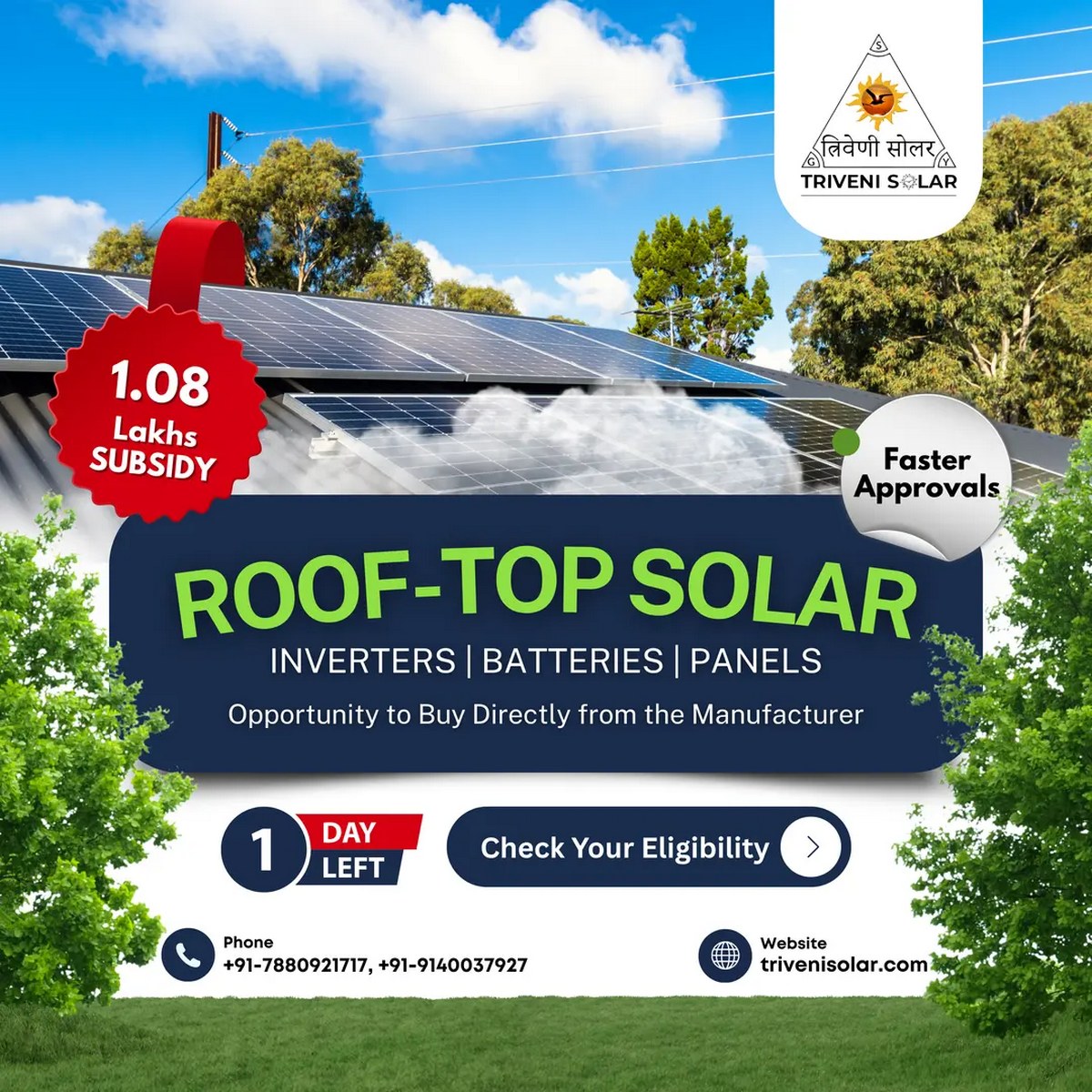
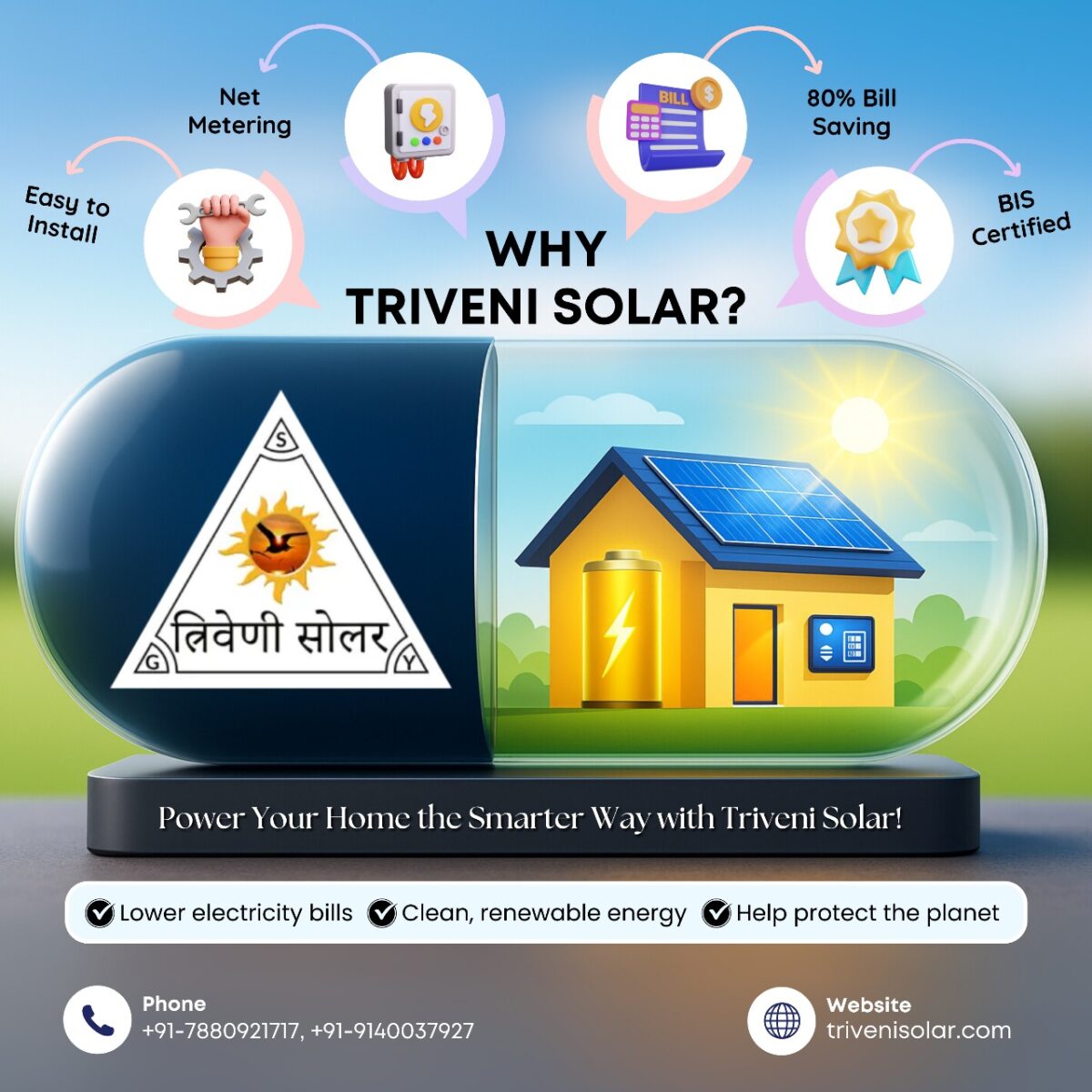
📊 Comparison Table: Mounting Types
| Type | Cost Range (₹/kW) | Best Use | Pros | Cons |
|---|---|---|---|---|
| Rooftop | ₹5,000 – ₹8,000 | Urban homes, offices | Space saving, cost-effective | Roof strength required |
| Ground-Mounted | ₹7,000 – ₹12,000 | Farms, large projects | Easy maintenance | Land requirement |
| Floating | ₹15,000+ | Lakes, reservoirs | Land saving, cooling effect | Higher initial cost |
| Carport/Canopy | ₹12,000 – ₹18,000 | Parking lots | Dual purpose | Expensive |
Solar Panel Mounting Structure Engineering & Safety Essentials
Mounting structures must handle wind load, seismic activity, snow (if applicable), and monsoon rains. Poor-quality structures can collapse—leading to massive losses.
- Wind Load: BIS codes in India recommend testing for up to 150 km/h winds.
- Corrosion Resistance: Galvanized or anodized aluminum is a must.
- Seismic Safety: Critical in earthquake-prone zones.
- Tilt Angle: Usually 15°–30° in India for max efficiency.
Choosing the Right Solar Panel Mounting Structure in India
The best solar panel mounting structure depends on your budget, available space, and weather conditions. Here’s a decision matrix:
| Scenario | Recommended Mount | Reason |
|---|---|---|
| Urban residential | Rooftop Tilt | Saves space, affordable |
| Rural farm | Ground Mount | Plenty of land, easy maintenance |
| Industrial project | Carport / Ground | Dual use, scalable |
| Near water body | Floating | Land saving, cooling effect |
Indian Case Studies & Mini Research
At Triveni Solar, we’ve seen how the right structure transforms solar performance. For instance:
- A 5kW rooftop system in Hyderabad cost about ₹30,000 extra for premium galvanized mounts but delivered better resilience during monsoons.
- A ground-mounted 50kW system in Andhra Pradesh faced zero damage during storms thanks to deeper concrete foundations.
Solar Panel Mounting Structure Maintenance & Longevity Tips
- Inspect bolts and joints every 6 months.
- Check for corrosion or rust, especially after a monsoon.
- Clean solar panels gently to avoid stressing mounts.
- Ensure proper drainage around mounts to prevent waterlogging.
Frequently Asked Questions (FAQs)
What are the types of solar panel mounting structures?
Common types include rooftop, ground-mounted, floating, pole-mounted, and carport systems. Each has unique cost and space requirements.
How much does a solar mounting structure cost in India?
On average, ₹5,000–₹12,000 per kW depending on type and material. Premium systems cost more but last longer.
How can I make solar mounting stormproof?
Use galvanized steel or anodized aluminum, follow BIS load standards, and ensure professional installation with deep foundations.
What is the lifespan of solar panel mounting structures?
With quality materials and maintenance, they last 20–25 years—matching the lifespan of panels themselves.
Conclusion
A solar panel mounting structure is not just a support—it’s the backbone of your solar investment. In India, where weather challenges are serious, choosing the right mount can mean the difference between failure and 25+ years of reliable performance.
Looking for expert installation, premium materials, and storm-proof designs? Contact Triveni Solar today for a free consultation and custom mounting solution.

